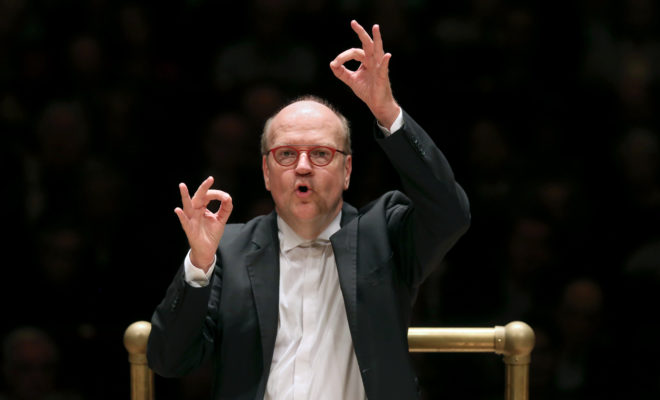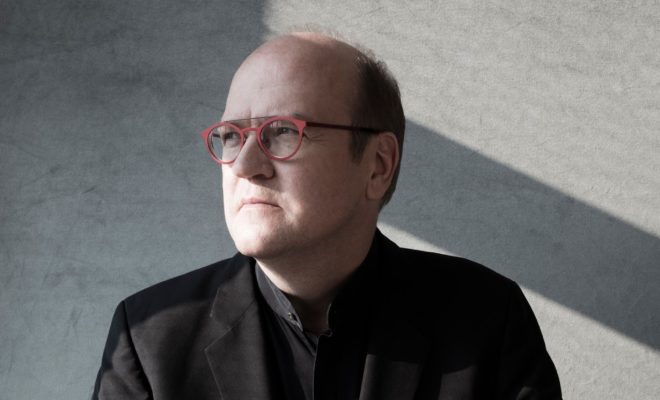According to Bach’s necrology (obituary), published four years after his death, he composed five great Passion settings. Only two of them have survived in full: the fabulous St. John and St. Matthew Passions.
There exists the St. Luke Passion (BWV 246), partially in Bach’s handwriting. Beginning with Mendelssohn, every musical authority has agreed that this is the copy of a work by a lesser master, initially thought to be Johann Melchior Molter (1696-1765). This theory was recently debunked, though whoever the composer of that piece was, Bach found their work good enough to perform it three times, in 1730, 1735, and sometime between 1743 and 1746. For the last performance he added one movement (a setting of the chorale Aus der Tiefe rufe ich zu dir) which is the only part of the work that is, without question, ascribed to Bach.
But what of the other two Passions? One of them was a Passion according to St. Mark, with libretto published in 1732, that is, one year after the presumed first performance in 1731. The libretto was by Christian Friedrich Heinrici, also known as Picander, who was Bach’s regular collaborator in Leipzig.
Is the music entirely lost? We are not sure. It was common for Bach to reuse previously composed vocal works by adjusting a new text to preexisting music in a process known as parody. It was a way for him to recycle music that had been composed for one-time only occasions, examples of which include the congratulatory cantatas composed in Leipzig for the successive Prince-Electors of Saxony and Poland.
In almost all known cases, Bach reused secular cantatas by adjusting a new text to the music, thus turning the preexisting composition into a religious work which he could then reuse over the years in his functions as Kantor in Leipzig. His partner in crime was always Picander, who had a clear talent for creating new texts that perfectly followed the structure of the original, thus requiring no or very limited alteration to the music itself. For instance, the Christmas Oratorio was created by recycling many movements from secular cantatas using new texts by Picander There is actually very little new music in the choruses and the arias, but the transformation is so well done that it triggers absolutely no feeling of “second hand” music.
In the 1860s, the German composer and musicologist Wilhelm Rust (1822-1892), who curated many volumes of the first complete edition of Bach’s works for the Bach-Gesellschaft, noticed that a significant number of texts from the libretto of Bach’s lost St. Mark Passion had the exact same structure as the text from the various movements of the Funeral Ode BWV 198. It only would have made sense for Bach to go back to the magnificent music of this funeral secular cantata for liturgical use.
Rust’s discovery prompted many attempts at reconstructing Bach’s St. Mark Passion, a process which necessarily requires a lot of imagination. Only a certain number of movements can be taken from the music of the Funeral Ode, which naturally leads to the borrowing of music elsewhere in Bach’s immense output (there are for instance hundreds of chorale settings available). There is no way however to reconstruct the recitatives, which are probably lost forever. This is a major problem for reconstruction, as the recitatives serve as “musical glue” that keeps the different components of the drama together.
Some enterprising musicians have composed anew all of the recitatives; others have used the recitatives from the spurious St. Luke Passion, or from a St. Mark Passion initially believed to have been composed by Reinhardt Keiser (1674-1739), although the authorship of that piece is now contested. This latter solution is very tempting because we know Bach performed the Passion (attributed to Keiser) at least twice during his career, including once in Leipzig. In my opinion this approach remains a doubtful solution, for two main reasons:
- First, while it bears some resemblance to Bach’s style, such as the use of a “halo” of strings when Jesus sings (as in the St. Matthew Passion), it is definitely not at the level of the great master’s writing, especially in terms of harmonic richness.
- Second, Keiser’s (or whoever’s) score does not cover all the excerpts from the Gospel of Mark that are used in Picander’s libretto designed for Bach.
Whatever solution is adopted, it implies writing a significant amount of new music from scratch. And this, I fear, amounts to welcoming a gigantic elephant in the music room.
Ton Koopman, one of the greatest living Bach performers and experts, does not subscribe to the Funeral Ode parody hypothesis, and has therefore reconstructed the St. Mark Passion in a completely different way, which implies a lot of new composition. In this particular case and given Koopman’s considerable expertise, I have to say the elephant is especially graceful and manages to make us forget its true nature very often; but nonetheless this graceful elephant remains in the room.
For this essay I have chosen the opening chorus of a hypothetical St. Mark Passion in a reconstruction that adheres to the idea of a connection with the Funeral Ode. A recently rediscovered version of the Picander libretto, revised for a performance that probably took place in 1744 (the discovery of which has led to a new reconstruction of the score by Alexander Grychtolik), only reinforces in my mind the lineage from one piece to the other.
Those of you who know the Funeral Ode will instantly recognize its magnificent opening chorus; only the words are different. If you look at both texts side by side (Funeral Ode to the left, St. Mark Passion to the right), you can see how cleverly Picander manages the parody process, as the new text follows every detail of the structure of the original (which was written by Johann Christoph Gottsched): not only meter and rhymes, but accents and inner rhythm as well.
| Lass, Fürstin, lass noch einen Strahl | Geh, Jesuh, geh zu deiner Pein! |
| Aus Salems Sterngewölben schiessen. | Ich will so lange dich beweinen, |
| Und sieh, mit wievel Tränengüssen | Bist mir dein Trost wird wiederscheinen, |
| Umringen wir dein Ehrenmahl. | Da ich versöhnet werde sein. |
To the German speakers among you, this reads as two very different texts, but they can fit the same music perfectly without any modification. Many people have commented over the years on the questionable quality of Picander’s poetry in Bach’s religious works from the Leipzig period, but it is undeniable that Picander possessed specific qualities that were paramount to Bach. One of them was his proficiency in the art of parody.
Now let’s look at the translation of the new text for the St. Mark Passion:
| Go, Jesus, go to your suffering! |
| So long I will mourn you, |
| Until your consolation appears to me again, |
| When I shall be absolved. |
A quick analysis of the new piece created by the process of parody reveals that Bach chose the music from the Funeral Ode in a deliberate way.
The impulse on the imperative Geh (“Go”), combined with the march-like accompaniment in constant dotted rhythms, creates a processional picture which evokes Jesus’ bearing of the cross in the streets of Jerusalem while the crowd of believers comment the scene. In terms of musical rhetoric, the process is eerily similar to the opening chorus of the St. Matthew Passion.
The dotted rhythms have many implications:
- First, they are reminiscent of the French overture as befits the opening movement of a dramatic work, and therefore constitute the musical signature of royalty (Jesus as King)
- Second, they also bring to mind the similar rhythmic figures that accompany Simon of Cyrene bearing Jesus’ cross in the aria Komm, süsses Kreuz from the St. Matthew Passion.
It is a shame that the score of the St. Mark Passion has vanished probably forever, as the few numbers that can be reconstructed with almost certainty using the Funeral Ode BWV 198 convince us that we have lost something of an importance probably similar to that of the Christmas Oratorio – another work mostly drawn from previous compositions remastered in an exceptionally skillful way by Bach.
I still dream that one day, someone will open an old dusty box in the attic of some remote monastery and will find it. One can always hope.
Program
Johann Sebastian Bach
Markus Passion, Bwv 247: Chorus: Geh, Jesu, Geh Zu Deiner Pein!
Johann Sebastian Bach
"Lass Fürstin, lass noch einen Strahl" Cantata, BWV 198: 1. "Lass Fürstin, lass noch einen Strahl"











